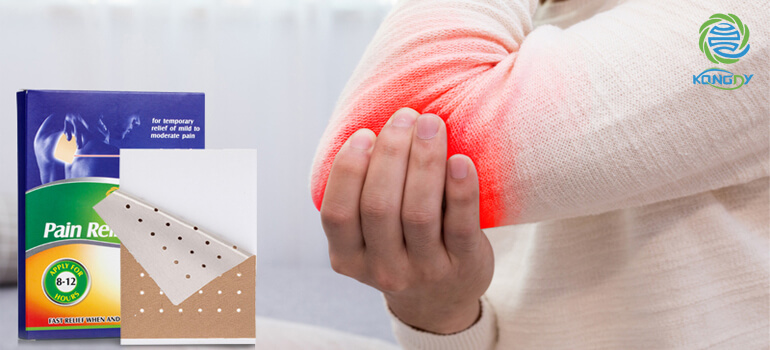Herbal Pain Plaster: The Right To Follow&The Better You Got
Chinese herbal pain plaster is a kind of external use of traditional Chinese medicine. It was called "thin paste" in ancient times. It is boiled with vegetable oil or animal oil to make a jelly-like substance and applied to one side of cloth, paper or skin. Pain relief, etc.
There should be a certain method to apply the plaster, it is not something that can be solved casually. Kangdi tells you below:
01. Three precautions for sticking plaster.
1. Clean up.
Before sticking the plaster, the local area should be cleaned and dried before sticking. If the skin is wet, it will speed up the analysis of drug components, increasing the chance of allergies.
Clean up the hair, otherwise it will not stick to the treatment effect, and the hair will cause pain when peeling off.
When the weather is cold, if the plaster is not easy to stick, you can put the plaster on it and then apply it with a hot water bottle.
2. Select the correct location.
First touch the pain point so that the center of the pain reliever can stick to the most painful point. When pasting, first separate a part of the plaster from the rubber pad, paste it near the most painful place, and tear off the pad along the direction of the pain point while sticking. If the sticking position is not accurate, it will affect the curative effect.
3. Bake and heat.
Some plasters need to be heated when they are applied. The plaster should be baked on a small fire of a kettle or an alcohol lamp or a candle to dissolve, and then stick it to the affected area when the baked plaster does not scald the skin.
Nowadays, more and more people use plaster to treat diseases. This is because plaster not only requires no surgery, no pain, but also has significant curative effect and no side effects, so most people choose this method.
02. The principle of traditional Chinese medicine plaster
Traditional Chinese medicine surgical plaster is to use the principle of traditional Chinese medicine to return to the meridian, and use the efficacy of drugs to coordinate with each other to form a large compound of multi-flavored drugs, so as to exert the good effect of drugs.
Since the plaster is used for thin sticking on the muscle surface, the thick-smelling medicine is taken from the plaster, and the medicine is introduced to lead the group of medicines to open the knot and travel directly to the hospital. Therefore, it can penetrate into the skin to produce anti-inflammatory, analgesic, invigorating blood circulation and removing stasis, clearing the meridians, opening the orifices and penetrating the bones, dispelling wind and dispelling cold, etc.
The plaster attached to the body surface stimulates nerve endings, through reflex, dilates blood vessels, promotes local blood circulation, improves the nutrition of surrounding tissues, and achieves the purpose of reducing swelling, inflammation and pain.
The ingredients in the plaster may sometimes penetrate deep into the skin through the sweat pores, induce allergies, and cause contact dermatitis, commonly known as "plaster wind". Erythema with the same shape and clear boundary as the plaster pasted appears, accompanied by severe itching, and in severe cases, blisters or even bullae may appear, which is very painful. Therefore, if there is an allergy to the plaster, the patient should remove the plaster in time and go to the hospital for treatment.







